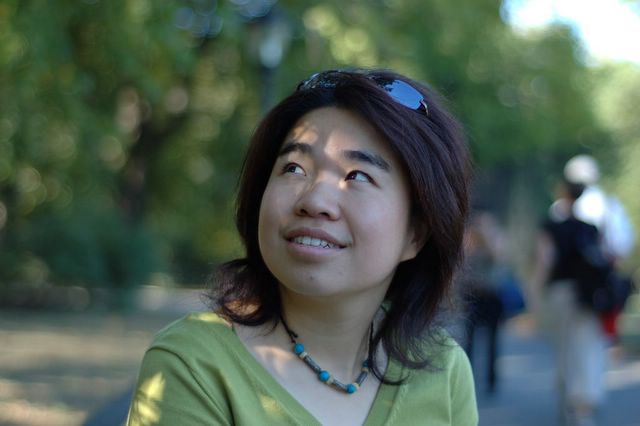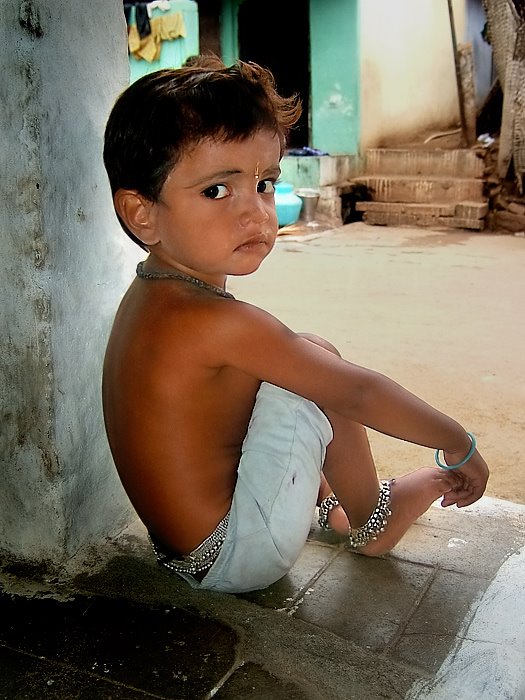
昨天放弃学习的希望,躺在床上看电影。选了英国电影《人类之子》,为了挽回这部电影对身心的打击,又看了宫崎峻的《霍尔的移动城堡》作为消遣。两部截然不同的电影,不谋而合的讨论了共同的主题,人类的爱和希望。《人类之子》以科幻小说的形式探讨了在人类即将灭绝的时刻,如何保有和延续信仰和希望。改编自黛安娜・韋恩・瓊斯的小说的《霍尔的移动城堡》,探讨了在战争的威胁之下人类的希望如何使爱成为可能。
根据维基不知道的介绍(介绍得很好),
“Children of Men is an Academy Award-nominated 2006 science fiction film directed by Alfonso Cuarón, loosely adapted from P.D. James's 1992 novel The Children of Men. The cast includes Clive Owen, Julianne Moore, Chiwetel Ejiofor and Michael Caine. Set in the dystopian United Kingdom of 2027, two decades of global infertility have left the entire human race with less than a century before extinction, and the resulting societal collapse has led to terrorism, environmental destruction, and millions of refugees. Civil servant Theo Faron (Clive Owen) must help a pregnant West African refugee named Kee (Claire-Hope Ashitey) escape Britain's oppressive new immigration laws and rendezvous with the Human Project, the greatest hope for humanity。
Children of Men explores the theme of hope and faith[30] in the face of overwhelming futility and despair.[31][17] The film's source, the novel The Children of Men by P. D. James, describes what happens when society is unable to reproduce, using male infertility to explain this problem.[32][33] The film switches the cause to female infertility, and expands this theme as a metaphor for a increasing loss of hope for humanity,[17] while the Human Project becomes a "metaphor for the possibility of the evolution of the human spirit, the evolution of human understanding."[34]
Critic Jason Guerrasio describes the film as "a complex meditation on the politics of today" which highlights the debate on immigration.[4] Ethan Alter observes that the film "makes a potent case against the anti-immigrant sentiment" popular in modern societies like the United Kingdom and the United States.[35] Alter also notes the visual nature of the film's exposition, which occurs in the form of imagery as opposed to dialogue.[35] For example, the refugee camps in the film were intended to visually invoke Abu Ghraib prison, Guantánamo Bay detainment camp, and The Maze.[34] Other popular images appear, such as a prisoner in a pose resembling the photograph of Satar Jabar in the Abu Ghraib torture and prisoner abuse scandal, and a sign over the refugee camp reading "Homeland Security".[36] The similarity between the hellish, cinéma vérité stylized battle scenes of the film and current news and documentary coverage of the Iraq War, is noted by film critic Manohla Dargis, describing Cuarón's fictional landscapes as "war zones of extraordinary plausibility".[37]
In the film, refugees are "hunted down like cockroaches," rounded up and put into cages and camps, and even shot, leading film critics like Chris Smith and Claudia Puig to observe symbolic "overtones" and images of The Holocaust.[38][31] This theme is reinforced in the scene where an elderly refugee woman speaking German is seen detained in a cage,[3] and in the scene where British Homeland Security strips and beats illegal immigrants, a song by The Libertines, "Arbeit Macht Frei", plays in the background.[39] "The visual allusions to the Nazi roundups are unnerving," writes Richard A. Blake. "It shows what people can become when the government orchestrates their fears for its own advantage."[40]
Cuarón explains how he uses this imagery to propagate the theme by cross-referencing fictional and futuristic events with real, contemporary, or historical incidents and beliefs:
"They exit the Russian apartments, and the next shot you see is this woman wailing, holding the body of her son in her arms. This was a reference to a real photograph of a woman holding the body of her son in the Balkans, crying with the corpse of her son. It's very obvious that when the photographer captured that photograph, he was referencing La Pieta, the Michelangelo sculpture of Mary holding the corpse of Jesus. So: We have a reference to something that really happened, in the Balkans, which is itself a reference to the Michelangelo sculpture. At the same time, we use the sculpture of David early on, which is also by Michelangelo, and we have of course the whole reference to the Nativity. And so everything was referencing and cross-referencing, as much as we could."
Described as a "companion piece" to Cuarón's Y tu mamá también (2001), Children of Men is also a road movie: Theo's heroic journey across the UK mirrors his personal quest for "self-awareness",[35] a journey that takes Theo from "despair to hope".[41] According to Cuarón, the title of P.D. James' book (The Children of Men) is a Catholic allegory derived from a passage of scripture in the Bible.[42] (Psalm 90(89):3 of the KJV: "Thou turnest man to destruction; and sayest, Return, ye children of men."[43]) James refers to her story as a "Christian fable"[32] while Cuarón describes it as "almost like a look at Christianity": "I didn't want to shy away from the spiritual archetypes," Cuarón told Filmmaker Magazine. "But I wasn't interested in dealing with Dogma."[4] The audience swims through an ocean of Christian symbolism, where British terrorists named "Fishes" protect the rights of fugees.[44] Opening on Christmas Day in the United States, critics compared the characters of Theo and Kee with Joseph and Mary,[45] calling the film a "modern-day Nativity story".[46]
To highlight these spiritual themes, Cuarón commissioned a 15-minute piece by British composer John Tavener, an Orthodox Christian whose work resonates with the themes of "motherhood, birth, rebirth, and redemption in the eyes of God." Calling his score a "musical and spiritual reaction to Alfonso's film", snippets of Tavener's "Fragments of a Prayer" contain lyrics in Latin, German and Sanskrit sung by a mezzo-soprano. Words like "mata" (mother), "pahi mam" (protect me), "avatara" (saviour), and "alleluia" appear throughout the film.[2][47]
Following the last scenes and the credits, a Sanskrit prayer for peace, "Shantih Shantih Shantih" is shown. These words are also used at the end of an Upanishad and in the final line of T.S. Eliot's poem, The Waste Land.[48]
Without dictating how the audience should feel by the end of the film, Cuarón encourages viewers to come to their own conclusions about the sense of hope depicted in the final scenes: "We wanted the end to be a glimpse of a possibility of hope, for the audience to invest their own sense of hope into that ending. So if you're a hopeful person you'll see a lot of hope, and if you're a bleak person you'll see a complete hopelessness at the end."
整部电影黑暗沉重,夹杂各国口音的英语和复杂的情节仿佛是导演有意加入的障碍,想造成一种人为的理解困难。我没有读过小说原著,今天在网上搜了一下,发现原来的小说还要更加黑暗。在人类进入无生育能力的时代以后,人们之间原有的壁垒不但没有减少,而且变得更加不可逾越。出自种族、国籍、年龄、性别、身份的差异所产生的不理解和误会,变成了歧视的理由。有的人利用人们的歧视毁灭了民主的社会,用一个极权政府取而代之。在一个没有未来的社会里,人类丧失了基本的行为约束的必要和可能。因此集权政府就设立秘密警察和集中营,来控制社会底层的移民和所有社会成员。这个社会建立在赤裸裸的社会达尔文主义之上,是“1984”的极端版本。
整个社会崩溃的根源是生育能力的丧失。由于不能在自我复制和生产,人们预期自己所处的社会将在不久的未来毁灭。这个所有人的行为都不能改变的事实,毁灭了现存信仰的基础—希望。所有的信仰都或多或少地给予现世或者来世的希望,而这个希望一旦幻灭,那么信仰给予人的安慰力量也就基本丧失了。基于信仰的道德和社会准则,两性关系的准则,以及人际关系的准则全都随之而崩溃了。自然环境也随着社会的礼崩乐坏而迅速恶化,电影中所表现的英国就是现在伊拉克社会的缩影—人人随时处在自杀性爆炸的威胁之下,没有未来,没有信仰,集权政府统治社会的所有层面,人对人的压迫前所未有的严酷和赤裸。这些隐藏在伊拉克战争背后的残酷事实变成了在可预期的未来每个地球人都将面临的现实。
原著的背景是冷战之后的世界,而影片则以当下世界中的危机为背景,将巴尔干战争、美伊战争、关塔纳莫阿富汗战俘营、反恐怖主义战争、国土安全、以及欧洲和美国存在的反移民倾向都引入到影片中来。未来世界中这些似曾相识的政治话语增加了影片的震撼力,同时也更加恐怖。因为故事发生在2027年,也就是20年后。这是一个当下大部分人都会经历的未来。世界的毁灭不是出于任何外来的危机,而正是目前政治和环境问题的必然结果。这种恐怖发自对目前我们所生存世界的反思,格外引起人的不安。如果没有信仰、希望和未来,你将如何生活?生活如何可能?这些本体论意义上的问题,通过这部影片变得和我们的生活非常贴近,每个人在看完之后都不得不扪心自问。
影片的结尾处,Theo 帮助母女两个人逃出了围城,自己则受伤死去。在迷雾中,母女俩人等待着叫做“明日号”船来营救她们。我想起了安哲洛普罗斯的《雾中风景》,迷雾象征着若有若无的希望。迷雾散去,等待的可能是安全的新世界或者死亡。故事有意留下了这样一个结尾让观众去揣摩。我是一个乐观的人,我觉得影片对原著的修改也透露了导演的乐观看法。在原著中,朱丽安怀孕了并产下了一个因个婴儿。影片将这个情节改为了一个来自西非的移民凯亚怀孕产子。整个人类的起源不就是来自于西非的一个女性黑人吗?我们现在所知道的最早的人类不就是一个来自埃塞俄比亚的女性露西吗?影片在世界即将结束的时候,让一个黑人女性再次获得生育的能力,这不就意味着人类生命的循环和往复,从终点再次回到起点? 这不就证明希望仍然存在?信仰仍然有意义吗?
这样沉重的电影看了让人疲倦,为了恢复对人类的信心,我接着看了宫崎峻的《霍尔的移动城堡》。根据维基不知道的介绍,“《霍爾的移動城堡》(ハウルの動く城,2004年)是由宮崎駿導演,吉卜力工作室推出的一部動畫電影。2004年11月20日在日本上映。英語版標題是Howl's Moving Castle。原作為英國小說作家黛安娜・韋恩・瓊斯的著作《魔法師霍爾系列〈1〉─魔幻城堡》(Howl's Moving Castle, 1986年)。”

这真是一个美的不能再美的神话,一个叫苏菲的女孩在爱上了年轻英俊的魔法师霍尔,但是荒野女伍的咒语她变成了一个老太婆。她生活在魔法师的身边,带着一个老年人的身体和年轻的心灵去爱那个自恋得不行的魔法师。她同时是年轻人和老年人,同时是爱人和母亲。她的爱让她冲动地行动,但她的身体和年龄让她能够耐心地和感恩地欣赏世界的美。苏菲开始爱霍尔,为了他的英俊和魔法。她渐渐地了解到霍尔魔法的局限(他甚至害怕荒野女巫),他的脆弱(他肯能变成魔王)和自恋(他是一个惟美的家伙,“如果长得不美,活着还有什么意思?”),而且他没有心(“他没有心,但是又法力无边”)。他甚至不是一个人,而是一只巨大的燕子。渐渐的,苏菲开始了解霍尔,用她青春的热情和老年的智慧去爱他。在故事的结尾,霍尔在战争中受伤即将死去,所有的希望似乎都熄灭了。苏菲和霍尔所有反对战争的努力都失败了,他们甚至无力保护自己,移动城堡也被摧毁了,霍尔已经没有力气恢复人形。为了拯救自己的爱人,苏菲闯入了他的神秘花园,看到年幼的霍尔和火神卡西法交换了心脏。原来霍爾為了獲得強大的魔法,吞下了一顆流星,與棲息在流星中的小惡魔卡西法定下了契約,讓火魔卡西法的魔力為他所用,但是自己的心(心臟)也將成為這個契約的交換品,由此來困住卡西法。她终于明白了霍尔无心的原因,她用自己的力量和爱拯救了霍尔和卡西法的生命。
随着年龄的增长,我真切的感觉到苏菲所经历的冲突。年轻人追求的美是肉体的、当下的、直接的和强烈的。年轻的感受就是一定要现在就爱,此时、此地、非如此不可。但是年纪大了,人会静下心来,欣赏那些需要岁月沉淀才能够显现出来的美。那些平淡地、厚实的、朴拙的,甚至不易察觉的美。在岁月潜流的深处,那些年轻时代的棱角都被抹去,年轻所带来的美会渐渐消逝。但也唯有如此,才能透过皮相,看到事物内部的美。这些美只会在我的眼中闪烁,而且可能由于它们剑出偏锋,得不到大多数人的喜爱。只有我知道,这是我在流失的时间中打捞出来的珍宝。对这些美的感知使我的人生变得丰富起来,这些都是年轻所不能给予的。现在的年龄带给我对美的体悟和感激,也有希望。我知道在不甚明朗的未来某处,我也会碰到我的城堡和移动的希望。


没有评论:
发表评论